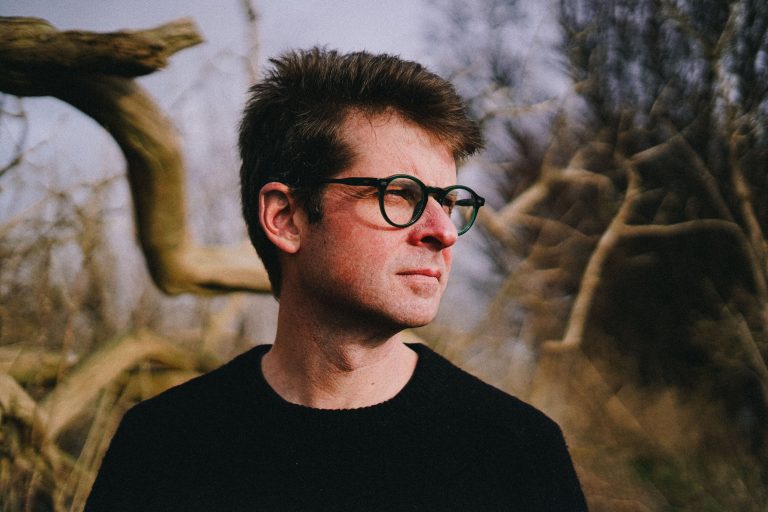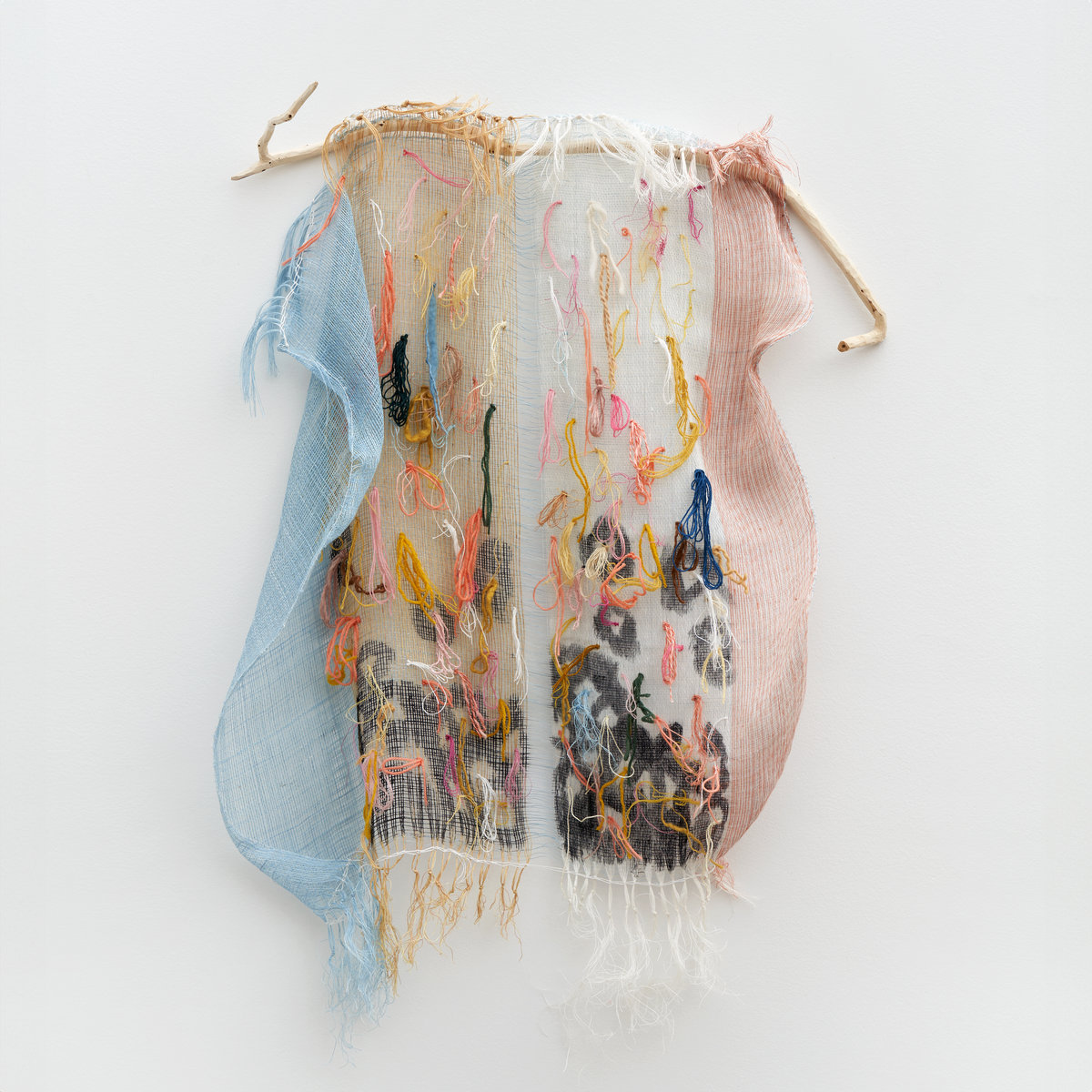The music of Blue Lake has always been more concerned with transitory moments than with any given endpoint. Describing it as a mix of electronic ambience, avant-folk, and jazz might point you in the right direction, but it gives little insight into the ways he meticulously weaves these sounds together. As the Texas-born, Denmark-based architect of Blue Lake, Jason Dungan works as a sonic storyteller, using aural linguistics to shape stories of open spaces and intricate emotional commonalities, digging deep into the roots of our shared experiences to craft worlds of subtle gravities.
Out today via Tonal Union, his latest release – a mini-album entitled Weft – is a pastoral gem, with acoustic guitars, viola, homemade zither, cello, clarinet, and other adaptable instruments painting a gorgeous vista of experimental Americana, country music for someone who is far from home. Partially inspired by the way in which his partner, Danish visual artist Maria Zahle, creates physical pieces of art on her loom, Dungan found that his way of creating music ran parallel to her weaving, both activities sharing foundational qualities while exploring the symbiotic relationship between artist and instrument.
“There’s a not-so-subtle visual relation between the masses of strings on the instrument and the masses of thread on a loom,” he explains. “Weaving allows you to have an intimate relationship between the many individual parts of a piece, as well as the finished whole, and I think for me that watching her process on the loom for many years has deeply impacted the ways in which I think about music.”
Weft finds Dungan building upon the technical aspects of his music as he explores a new emotional immediacy, offering sounds that are familiar but just slightly askew – folk music for watching the sunset on Mars or rural ambient rhythms that soundtrack the defeat of our terrestrial confines. We’re left wondering where we might go, and who might be there to welcome us. Dungan has agreed to walk us through this wilderness, to guide us through this compelling sonic terrain. Check out his thoughts on the songs that comprise Weft below.
- “Weft“
“This track had its origins not too long after I finished making the last Blue Lake LP. I tend to play guitar and zither a lot, not always consciously “writing”, but just working on chords, patterns, ideas. In the early stages of working on things, I never record, as I kind of want the ideas to be strong enough to stick around in my head until I pick up the instrument again.
There’s an intro guitar melody here, which I had played for a while, and worked up a live version with the band when we got ready to play Café Oto in 2023. The live version had a kind of countryish swing and a very circular structure, which I liked a lot, but I also felt that the piece had the potential to get kind of pulled apart in the studio, where I could really explore its structure. So, for this record, I ended up recording this one solo, as I wanted to be able to put it together with a range of instruments in a way that follows the shape of a band sound, but allows for several elements to coexist in space in a way which isn’t really possible in a live setting. This track is very focused on guitars, especially a play between nylon- and steel-string guitars, and also using the slide. It took a while for this to totally come together and flow, but I really like the way the different guitar parts interlock and create a sense of movement as they interact with each other.”
- “The Forest“
“This had an even longer gestation. I made an early version of it in the Swedish house where I recorded a lot of the Sun Arcs LP, and was quite fond of the way in which it layered guitar patterns into a kind of pulsing drone. In the end, it wasn’t quite ready and didn’t come on to that LP. I ended up sitting on it for a while, and ultimately re-recorded the whole thing, streamlining the structure and finding a balance between the guitar, zither, piano, and the wind elements, such as clarinet, melodica, and pump organ. One thing I like about recording solo is that each element is kind of equal in my mind – nothing really exists as a lead in my head – so it allows for a more overall approach to the sound as I’m putting it together. I ended up finishing most of the track in Copenhagen, but I went up to Sweden at the end, and recorded some of the pump organ there to complete the track. Being up in that space in Sweden has been a really consistent thread in a lot of my music, and this track still gets me in the head space of being up there. A particular inspiration for me is the way in which that forest landscape often initially feels “empty” but after time reveals a space teeming with sound and activity, often at the micro level. The experience of being there definitely feeds into the music.”
- “Oceans“
“A piece written solo on acoustic guitar. Mostly played on the nylon guitar that belongs to my mother-in-law. This one bears the traces of having played live quite a bit more over the past year. Although there are some dubbed elements (cello-as-bass, extra guitar), it’s fundamentally got a live core, and this has been a bit of a basis for a fair amount of the new music going forward. I’m still fascinated by the possibilities of studio recording, but I’m increasingly interested in the directness and risk-taking of playing live, and I’m building that into the recording process more and more.”
- “Tatara“
“This was developed through a live jam together with the band, initially when we were preparing for our Café Oto set in 2023, spending a few days at Andersabo, the house in Sweden I have used for various recording and other music projects over the years. We were improvising with the zither, the bass, the clarinet, and drums, and a loose structure emerged, into which I also added a guitar-led coda that I’d been working on. This was something we worked into our live set, which also included viola. I’m often interested in using some improv elements to generate ideas and forms, and then gradually refining these elements further, so that in the end the piece can become quite structured, but still retain points which are quite open. This makes pieces like this interesting to play because there’s always something new to dig into, and it keeps us listening to each other. To make the deadline for the record, we recorded this in my home studio – using all of the mics I have in my possession, as I’m used to primarily doing solo recordings there. Everyone’s schedule was pressed, so we only had time to set up and do two takes – we used up using the first one. Oliver, our drummer, was part of developing the track, but he was ill on the day, so we recorded it without percussion. Afterwards, I added a range of small percussion from my collection, including bits of metal found out in the woods in Sweden, a homemade log drum, some DIY gongs, and a bicycle wheel. I used a lot of this kind of percussion on the early Blue Lake records, so it was interesting to bring that sound into the band’s sound space. The title of the track refers to a volcano in Chile that my father studied for 25+ years. Growing up, it meant he was sometimes away for several weeks, working on the volcano. Although I finally visited the mountain a few years ago, for many years it was a kind of mythical, not totally real landscape on the other side of the world. The idea of that place had some kind of resonance for me with this track.”
- “Strata“
“I guess this one is keeping with the geology theme, title-wise. This also comes back to the live element. I played live quite a bit leading up to this, both with the band and solo. Playing solo often features extended playing on the zither, in a kind of hybrid improv/written mode, where I can return to themes, but where there is always a lot of new material. I had a new zither built by a luthier last year, the first time I have had a zither that wasn’t my own build. I’ve been having a blast exploring what the instrument can do, and also just enjoying the tone. This is also something that grew out of playing live, using the harp-like elements of the instrument as well as small micro-melodies. The zither is tuned in overlapping open chords, which I feel pushes me to remain inventive in how I play it, and I think this piece rounds off the record nicely.”
Order your copy of Weft here. Follow Blue Lake via Instagram and Bandcamp.


